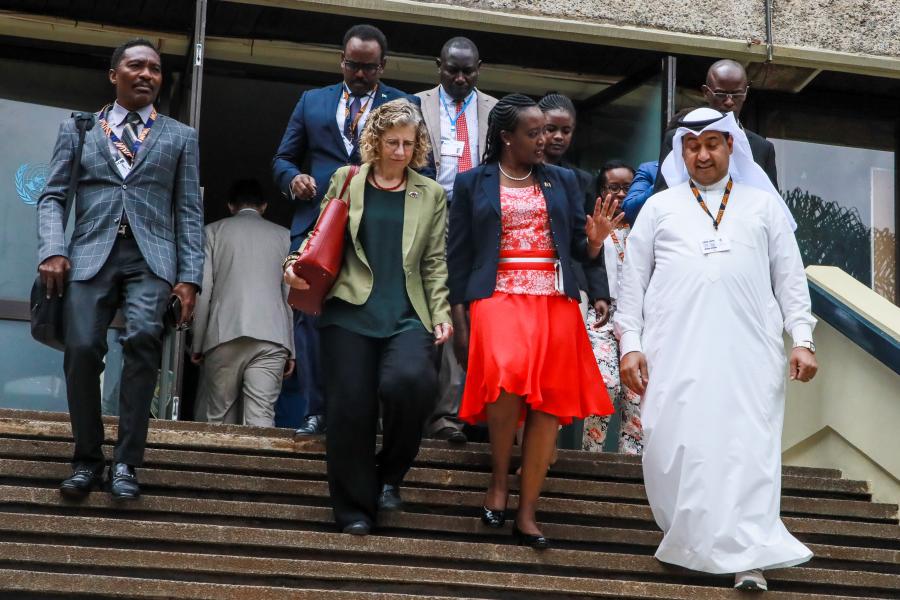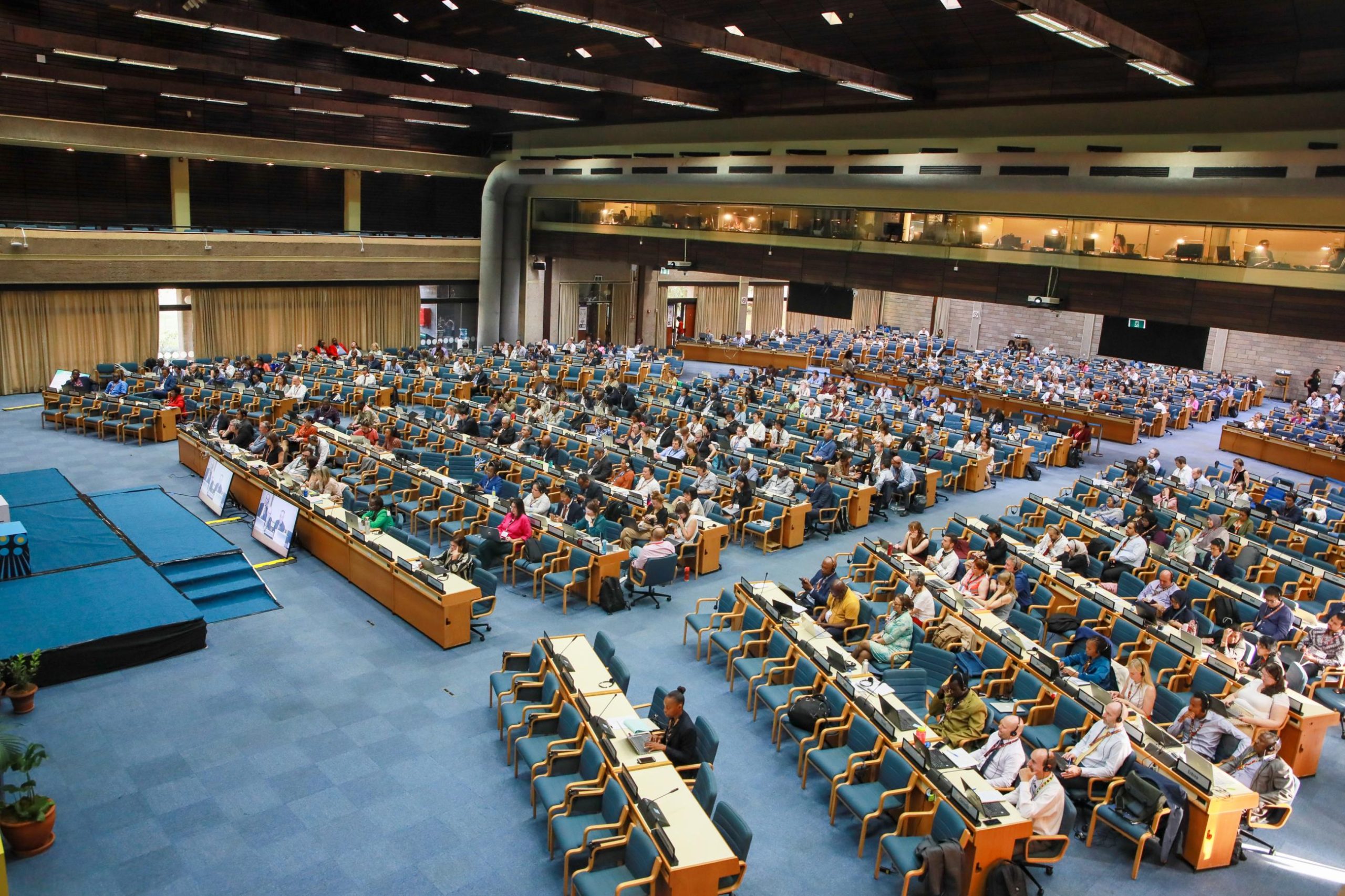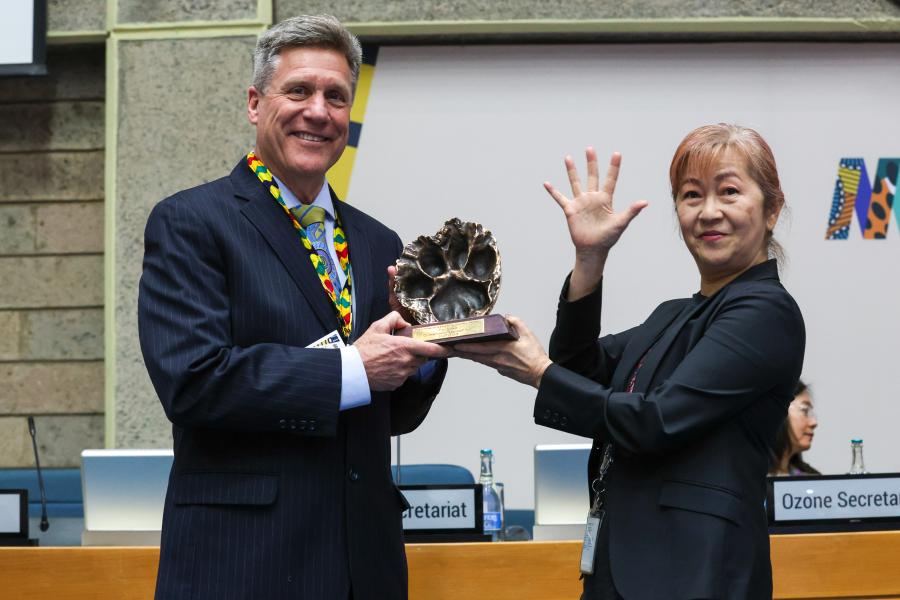The good news and the bad from the 35th Meeting of Parties to the Montreal Protocol



At the end of October 2023, Parties to the Montreal Protocol met in Nairobi, Kenya to discuss and make decisions on a number of important issues related to the protection of the ozone layer and the global climate.
High on the agenda at the 35th Meeting of Parties, which ran from 23-27 October, was replenishment of the Multilateral Fund (MLF), which exists to support developing countries as they phase out ozone-depleting substances (ODS) and climate-damaging hydrofluorocarbons (HFCs).
After a week of intense discussions, Parties agreed on an historic replenishment of almost $1 billion, the largest in the fund’s history by some margin.
This money will be enough to kickstart an accelerated phase-down of HFCs in developing countries, while still supporting the ODS phase-outs and providing funding to tackle additional challenges such as energy efficiency and the recovery and safe destruction of old equipment.

Inger Andersen (centre, left), Executive Director of UNEP, arriving for the high-level segment at MoP35 (c) IISD Earth Negotiations Bulletin
At the meeting, Parties agreed on a series of decisions to ensure they have all the scientific and technical information needed to tackle ongoing and future threats to our ozone layer and climate system. These included several decisions requesting updated information from two of the Montreal Protocol’s dedicated assessment panels, the Scientific Assessment Panel (SAP), and the Technology & Economic Assessment Panel (TEAP). Among these decisions were requests for SAP and/or TEAP to report back to Parties in 2024 on:
In addition to this, the assessment panels have been asked to consider a wide range of emerging issues as part of the Terms of Reference for their next quadrennial assessment (due in 2026). These issues include an assessment of the impacts of PFAS (known as ‘forever chemicals’ due to their persistence in the environment), the role of nitrous oxide (N2O) in ozone-depletion and climate change and a review of any other substances that could be of concern to the ozone layer but which are not yet controlled under the Montreal Protocol.
In other good news, Parties also agreed to a decision that will help prevent inefficient and outdated cooling equipment being dumped in developing countries and also drew attention to a number of emerging issues, such as stratospheric aerosol injection (SAI) that could soon present a threat to both ozone and climate.

View of the room during plenary (c) IISD Earth Negotiations Bulletin
Unfortunately, there were some issues on which Parties did not reach an agreement.
Despite a draft decision submitted by the EU, discussions on a comprehensive process to strengthen the institutions of the Montreal Protocol, which has been a focus of the work since the discovery of new, unexpected CFC emissions, did not progress any further. These discussions will resume at OEWG46 in 2024, at which point EIA will be calling for a roadmap or action plan to address the identified challenges in a timely way.
Another stumbling block at the meeting came in the form of a US proposal to change the status of China from an Article 5 (developing) country to non-Article 5. This change would mean that China is no longer able to receive funding from the MLF and would instead be expected to contribute towards its replenishment. The proposal caused some uncomfortable initial discussions and delayed the adoption of the agenda at the start of the meeting by several hours. Ultimately, the issue was not resolved at this meeting; it may be raised again next year.
EIA is concerned about the increasing presence of carbon traders at the Montreal Protocol, companies claiming that carbon markets must play a key role in recovering and destroying unwanted ODS.
These companies are seeking to profit from the capture and destruction of ODS in developing countries and are relying on spurious claims about the associated climate benefits to justify their actions.
It is true that emissions from so-called ‘banks’ of ODS and HFCs are of great concern and they do represent a substantial climate mitigation opportunity. However, since carbon credits are predominantly purchased to offset equivalent greenhouse gas emissions elsewhere, they are at best a ‘zero sum game’.
A strong and sustainable financing mechanism is needed to enable developing countries to manage refrigerants throughout their lifecycle, one which is not monetised by justifying equivalent emissions. This is especially true now as action to better manage the lifecycle of refrigerants is already being taken under the Montreal Protocol’s Multilateral Fund and through other initiatives.
EIA has strong concerns about the role of carbon trading in financing ODS banks’ destruction for multiple reasons, including:
This Meeting of Parties was also notable as the first to hear from the Children and Youth Major Group to UNEP.
The group told Parties about how they are motivated to play a role in ozone protection and urged an increase in the Montreal Protocol’s engagement of young people.
Shortly after the meeting was more positive news. Earlier this year, fears had been raised that the 2022 eruption of the Hunga Tonga volcano could result in 2023 experiencing the largest ever ozone hole. Happily, however, those fears have now been proved wrong.
On 1 November 2023, Paul Newman, former co-chair of the SAP and leader of NASA’s ozone research team, was able to confirm that “it’s a very modest ozone hole”. Here’s to it getting even more “modest” every year!
EIA pays tribute to Paul Newman and John Pyle, who have retired as co-chairs of the SAP. They have made outstanding contributions to advancing the solid scientific evidence base for the Montreal Protocol to take the important decisions it has taken over many years, and they will be greatly missed.

Paul Newman, former Co-Chair of the Scientific Assessment Panel (SAP), is presented with an award for his service by Megumi Seki, Executive Secretary, Ozone Secretariat (c) IISD Earth Negotiations Bulletin